
Figure 62: View of the western temple from the west, with the temple at the bottom left (AFSRCM, S. Omobono, b. 29, 7, c. 3483).
The investigation of the western temple has been carried out in several phases, some of which are better documented and can thus be reconstructed more securely than others. After the initial examination of the site, work directed specifically at the temple was carried out in the second half of the 1960s, with more invasive efforts in the 1970s.
Planning the excavations to be carried out in the area of the western temple in 2010-2011 required a reanalysis of earlier work, which is presented in this section.
After the removal of the structures covering it, the cella of the temple preserved a floor and a square cippus, the latter on a different orientation from that of the walls of the cella. This situation is documented by two photographs, one offering a general view of the area from the west, with the temple on the bottom left, and the other a view of the cella from the east (Figs 34 and 62; AFSRCM, S. Omobono, b. 65, foto nn. 16443 e 16035). The second image attests the first phases of work within the cella, with a trench along the rear and eastern walls. Presently, no additional documentation is available concerning these trenches.

Figure 62: View of the western temple from the west, with the temple at the bottom left (AFSRCM, S. Omobono, b. 29, 7, c. 3483).
A summary from 29 and 31 July 1967 records work carried out in order to date the pavements of the cella (AFSRCM, S. Omobono, b. 70, 5, cc. 16361/56-59). The summary notes that an excavation was carried out along the western side of the cella, an area that had already been excavated and filled with pozzolana ('dove già era stata fatta una fossa che era stata riempita di pozzolana'). While the trench was being cleaned, two joining fragments of a Genucilia plate decorated with the profile of a woman were discovered. On 29 June, three layers of variable thickness were excavated. According to the notes, layer 1, a deposit of grey soil approximately 12-14cm in thickness, included substantial traces of charcoal, bones, cast bronze fragments, black-slip pottery (campana A), some red-slip fragments (pre-sigillata; described in the notes as 'color pomodoro' (tomato-coloured)), roof-tiles, and plaster. Layer 2, approximately 30cm in thickness, was characterised by reddish soil with fragments of tufo rosso. Layer 3, of greyish soil, was 'a contatto con uno strato duro e argilloso, molto avara di cocci (esclusivamente di impasto)' (connected to a hard clayey layer, with rather few sherds (exclusively impasto)).
On 31 July the excavation began in earnest. The notes record that the trench was extended to form an L-shape by removing poorly preserved sections of the pavement. Under the preparation layer of the pavement was a reddish layer (composed of tufo fragments) covering the same three layers excavated in the original trench. An east-west section drawn by Sartorio documents this sequence analytically; additional documentation includes an undated schematic plan of the soundings and an annotated photograph showing the location of the soundings (Figures 63, 64, 65; the section is dated generally to July 1969; unlike in the excavation notes, the layers are designated with Roman numerals; AFSRCM, S. Omobono, b. 70, 3, c. 16313.3; this plan features a handwritten annotation indicating that it refers to work carried out in 1969; this contradicts the date of the excavation notes, which is given as 1967; AFSRCM, S. Omobono, b. 70, 3, c. 16315 (section): the photograph is AFSRCM, S. Omobono, b. 70, 5, foto 16361/65).
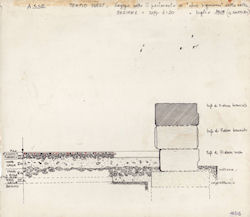
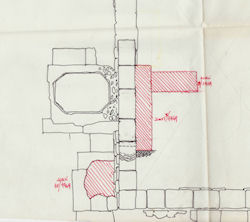
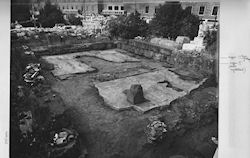
Figure 63: East-west section of the sounding within the western temple (AFSRCM, S. Omobono, b. 70, 3, c. 16315).
Figure 64: Schematic plan of the soundings within the western temple (AFSRCM, S. Omobono, b. 70, 3, c. 16313.3).
Figure 65: Annotated photograph showing the location of soundings within the western temple (AFSRCM, S. Omobono, b. 70, 3, c. 16361/65).
In the 1970s, parts of the pavement of the cella were removed for restoration. A letter from Sartorio to the Sovraintendente Pietrangeli, dated 30 January 1976, details how the removal of sections of the pavement would also provide an opportunity to continue the investigation of the area:
'Nel corso di tale lavoro si prevedono sondaggi scientifici da effettuare nel terreno al di sotto del pavimento da distaccare, nel quale si prevede di poter rinvenire materiale archeologico atto ad offrire elementi per una più sicura datazione del pavimento stesso (AFSRCM, S. Omobono, b. 27, 16, c. 2966).'
This work was carried out in the southern half of the cella, where a section of pavement of approximately 18m² was preserved, though with a large lacuna in the centre (AFSRCM, S. Omobono, b. 27, 16, c. 2968).
Subsequent work was conducted by Sartorio between 27 September and 15 October 1979, and is documented by some excavation notes with schematic drawings, in some cases accompanied by measurements (the pertinent document in the archive is a photocopy of the original, and the photographs are thus of very poor quality; AFSRCM, S. Omobono, b. 70, 12, cc. 16310a-16310s). The excavation, carried out in the front of the temple (particularly the south-eastern portion of the cella) covered a small surface; subsequent extensions were also limited. In this area, a rectangular sounding measuring 2 x 0.75m was excavated underneath the eastern portion of the opus signinum pavement (Figure 66). This sounding was subsequently extended to the eastern wall of the cella and then also down to the south-eastern corner and along two courses of blocks of the frontal wall of the structure.
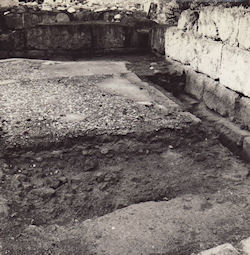
Figure 66: Photograph of the soundings within the western temple (AFSRCM, S. Omobono, b. 70, 5, c. 163610071).
In order to clarify the character and sequence of the work carried out in this area, the information recorded in the archival documents is summarised below.
The 27th September saw the excavation of a layer of cocciopesto ('malta bianca e tritume di cotto stesa sopra uno strato di solo tritume di cotto' (white mortar and crushed brick laid on layer of crushed brick), which served as the preparation layer of the pavement. The first layer, underneath the 'ruderatio' preparation for the pavement in opus signinum, was of red soil.
On 30 September, layer II, characterised by a grey soil matrix with many sherds of red-figure pottery, was excavated.
Next, a layer of brown soil, approximately 30cm thick, was excavated on 2 October. Within this layer, which contained little to no pottery, was a large tufo block and other sizeable, unworked tufo fragments, as well as a fragment of cappellaccio. On the same day, layer IV, distinguished by its greenish colour, was removed. An interpretative note in the excavation diary at the end of the entry for the day observes that this layer likely corresponded to a second pavement.
On 3 October, the sounding was extended towards the church of S. Omobono. Like the previously excavated sequence, in this extension layer 1 was characterised by a reddish matrix with fragments of tufo rosso and few sherds; layer II, of grey soil, yielded substantial amounts of material, including several sherds of red-figure pottery and one bucchero fragment. An annotated sketch in the notes shows that the layers were cut by a pit that ran parallel to the wall of the cella. Layer III, characterised by a brown matrix, yielded 'grossissimi massi di tufo ditto del Campidoglio' (very large fragments of tufo del Campidoglio), which gave the layer a reddish hue; the layer also included a block and several fragments of cappellaccio, a very scarce pottery.
On 4 October, Savino, one of the workers, extended the sounding to the south-eastern corner of the cella. At this point the excavators thought they had reached the foundation fill of the walls associated with the pavement and decided to extend the sounding in order to sample the deposits under the pavement. A 'fr. di cer. attica(?), con tracce di sovradipintura' (fragment of ?Attic pottery, with traces of overpainting) was recovered from layer II.
Layer IV, a greenish compacted surface with peperino fragments (on average, 10cm in length) and few sherds in the south-eastern part of the area, was excavated on 5 October. Underneath this surface was layer V, a brownish clayey deposit with cappellaccio fragments. Among the materials recovered were impasto and bucchero sherds.
The following day, the trench was extended to the west in order to check the relationship between the pavements and the wall. Within layer I was a rim of 'ceramica pomodoro' (tomato pottery), whereas layer II yielded an Attic sherd with a palmette and a rim fragment of a bowl. Layer III included a large quantity of blocks of tufo del Campidoglio and cappellaccio and few to no artefacts; the notes also record the presence near the wall of a pit with charcoal.
The 9th October saw the excavation of layer I, characterised by a sandy matrix with cappellaccio fragments covering 'una riempitura di massetti di cappellaccio (cm 23/15)' (a fill of small cappellaccio fragments (23/15cm)). These deposits only yielded a tile fragment. At this point the excavators encountered a yellow fill layer running slightly oblique to the last visible course of cappellaccio and decided to halt the work in this spot and resume it nearby. The same sequence was again excavated: layer I, a brownish deposit pertaining to the ruderatio immediately below the preparation for the pavement in opus signinum, with few sherds; layer II, characterised by a grey matrix, which yielded a black-gloss rim and a fragment of 'tomato pottery'.
Layer III, characterised by smaller fragments than seen in earlier soundings, was excavated on 10 October, yielding a bucchero base. Then, settore b was opened (taccuino, fig. 9, notes) in order to examine 'esaminare la diversità di colore nel tratto di terra lungo il gradino di cappellaccio, che costituisce l'intercapedine (?) tra questo e il pavimento di battuto verdastro' (the difference in colour between the soil along the cappellaccio stair, which constitutes the ?gap between it and the pavement of compacted greenish soil). On the following day, this work led to the conclusion that the 'pavement' was in phase with the cappellaccio blocks; the differently coloured band between the two was interpreted as a later intervention. The notes also record the presence of a block of cappellaccio that was worked to house the hinge of a door. This led to an effort to locate a second such door on the front of the cella.
On 15 October, Savino continued to excavate along the eastern internal wall, towards the Capitoline, where the block pertaining to the door had been found. The diary stresses that the layers had been disturbed during the restoration of the cella wall in tufo di Fidene in 1975. Nevertheless, the deposit was described as pre-dating the pavement in opus signinum. Another worked cappellaccio block was found, leading to the supposition that such blocks perhaps pertained to the framework of a mudbrick structure rather than to doors.
On 17 October, Savino began excavating along the wall parallel to the building of the Anagrafe in order to reach the greenish floor.
Numerous artefacts were collected in the layers within the cella. A wide range of material was registered with inventory numbers ranging from 1020 to 1576, under the heading 'tempio' (AFSRCM, S. Omobono, b. 70, c. 16311 aa-ao; an asterisk at the bottom of the first page indicated that such objects were checked in October 1979). The available documentation does not specify if these numbers represent a duplication in the inventory or if they pertain to the first work conducted in the cella in the 1960s. The latter possibility seems more likely, considering that they were likely accessioned sometime after the work was carried out. The artefacts from the 1979 work are much better documented (the materials are indicated by the designation 'T. 79', an abbreviation of 'tempio' and the year, followed by the layer number in Roman numerals and the objects number in Arabic numerals; these designations were added in progressively to the excavation diary; AFSRCM, S. Omobono, b. 70, 12, 1, c. 16310a ss.).
In 1968, a sounding of approximately 1.70 x 1.40m was excavated along the southern portion on the eastern wall of the cella. On 24 September 1968, the area was cleaned along with the rest of the site. The sounding was located in an area where the pavement of tufo slabs was missing. This lacuna was filled with a modern deposit, suggesting that it had already been excavated. Nevertheless, it was observed that the northern face of the sounding seemed to preserve an intact stratigraphic sequence sealed by the tufo slabs (AFSRCM, S. Omobono, b. 70, 12, 5 cc. 16361/88). An accompanying sketch provides a schematic plan indicating the location of the sounding and a section, which shows that the excavation had just begun. Neither drawing includes measurements.
The work was subsequently documented in a sketch dated to 25 October, which does not include a scale, and by a photograph of the sounding with a worker within it (Figs 67 and 68; AFSRCM, S. Omobono, b. 70, 12, 5 cc. 16361/108). The depth of the sounding from the pavement of slabs of tufo di Monteverde was ?2.20m, with a series of generally horizontal layers. The excavated sequence includes six layers with the following characteristics:
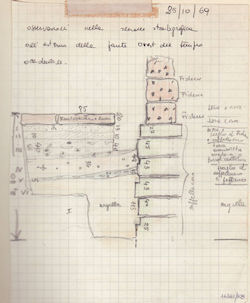
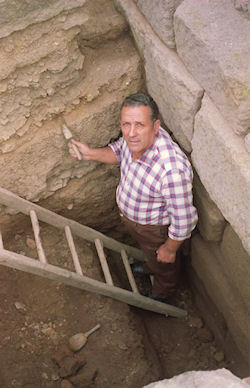
Figure 67: Sketch of the section of the sounding on the western side of the western temple (AFSRCM, S. Omobono, b. 70, 12, c. 16361/108).
Figure 68: Photograph of the sounding along the western side of the western temple under excavation (AFSRCM, S. Omobono, b. 70, 12, c. 16321/16).
The accompanying drawing also shows a section of the blocks of the cella wall, both in tufo rosso and di Fidene (three blocks total) and in cappellaccio (six blocks; the height of the cappellaccio blocks, from top to bottom, are 27, 45, 43, 43, 40, and 25cm; the last block, however, continued below the level reached by the sounding).
Within a lacuna in the Monteverde slabs, some of the plans pertaining to the same external wall of the cella show a quadrangular basin in opus caementicium resting on the perimeter blocks of the cella (AFSRCM, S. Omobono, b. 70, 12, 3, c. 16313.3).
This short reconstruction of the work carried out in this part of the site allows for some preliminary observations. It seems clear that the earliest work in the area compromised the relationship between the structures of the cella and the stratigraphy through the excavation of trenches along the perimeter walls of the cella.
In summary, within the cella was the following sequence of deposits, from bottom to top (this outline refers to the sequence excavated in 1979; the layers excavated in 1967, designated 1, 2, and 3, correspond to layers II, III, and IV from the 1979 excavations, respectively). Layer V can be interpreted as a fill of clay and cappellaccio fragments deposited as a preparation for the floor of peperino fragments above it (layer IV). Above this floor was another fill, layer III, resulting from the destruction of a currently unidentifiable structure, with a large quantity of tufo fragments and occasionally cappellaccio. This fill was covered by layer II, a greyish fill, while layer I can be interpreted as a preparation for the construction of the pavement in opus signinum. The sequence thus represents two pavements separated by fills and preparation surfaces.
The chronology of this sequence, particularly layers V and IV, is rather difficult to determine because not all the collected artefacts can be examined (the assemblages resulting from this work are divided among at least three storage facilities; one of the aims of the current project is to reunite data from contexts that have been separated in this way). Nevertheless, the exclusive presence of impasto and bucchero seems to point to a post-Archaic date for the deposition of these layers. It is thus not unlikely that the floor surface IV may have belonged to the same phase as the cappellaccio structures of the cella, as proposed by the excavators. For layer III, on the other hand, there are currently no elements on which to base an absolute date.
The pavement of opus signinum, which is still partially preserved, has in the past been dated typologically to no later than the end of the 3rd century BCE (Morricone Matini 1971, 7, n. 1, tab. VIII). A broader study has recently been carried out by Ramieri, who analysed this feature in its context and in relation to the other pavements attested at S. Omobono (Ramieri 2011, 1165-70). While the reorganisation of the warehouse of S. Omobono is still ongoing, it is possible to propose some chronological reconstructions based on the materials excavated so far (it should be noted that the analysis is still in its preliminary stages). In particular, it is important to note some artefacts that give a terminus post quem for this pavement. The levels below the pavement have yielded, among other material, a Genucilia plate with a female profile (inv. no. 1489). Moreover, layer I from the 1968 excavation (also below the pavement), has yielded two fragments of bases of black-gloss pottery attributable to the 'petites estampilles' production (series 2783 and 2981 in Morel's classification; inv. nos 1490, 1491; Morel 1981, 223, plate 72 and 243-44, plate 84) and a small reddish cup, probably misfired, attributable to Morel's series 2621 (inv. no. 1042; Morel 1981, 193-94, plate 60). The context of the materials under consideration can be placed within the first half of the 3rd century BCE, probably before 265, giving a terminus post quem for the construction of the signinum pavement of the cella. It is also important to point out that layer I also yielded various residual sherds of red-figure and sovradipinta red-figure pottery. Among such fragments is the rim of a skyphos with a figure wearing a cloak and two fragments from the same sovradipinta red-figure pot with phytomorphic motifs (inv. no. 1031; 1034-1035).
The stratigraphic sequence outside the temple is not sufficiently documented to allow for the reconstruction of a precise absolute chronology. Overall, however, it attests the deposition of various fills at least partly attributable to the external structure of the cella, probably connected to the construction of the cappellaccio walls (layers V-III) and the construction of the pavement of slabs of tufo di Monteverde (II-I).
© Internet Archaeology/Author(s)
University of York legal statements | Terms and Conditions
| File last updated: Mon Mar 12 2012